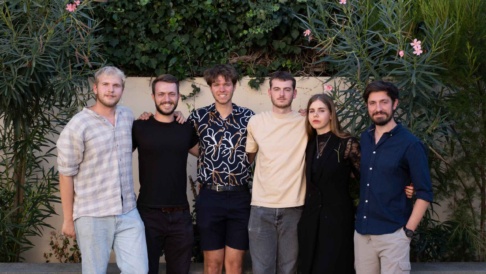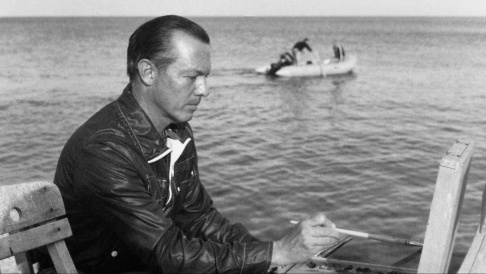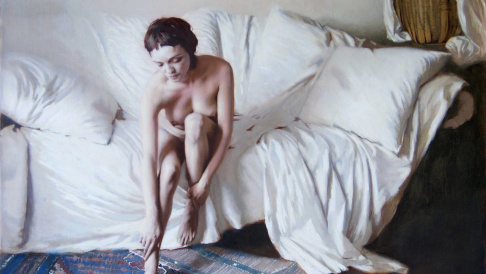This weeks’s Spotlight on Art features Hermits by FAA graduate and former Principal Instructor Zacheriah Kramer.
The idea behind the picture:
It seems we go wrong when we fail to see ourselves as part of the world around us. If this is not a modern tendency, at least I often fail to appreciate it enough. I try to counteract this in part by growing and raising a large part of my family’s food from the dirt, water, and sunlight right outside our door.
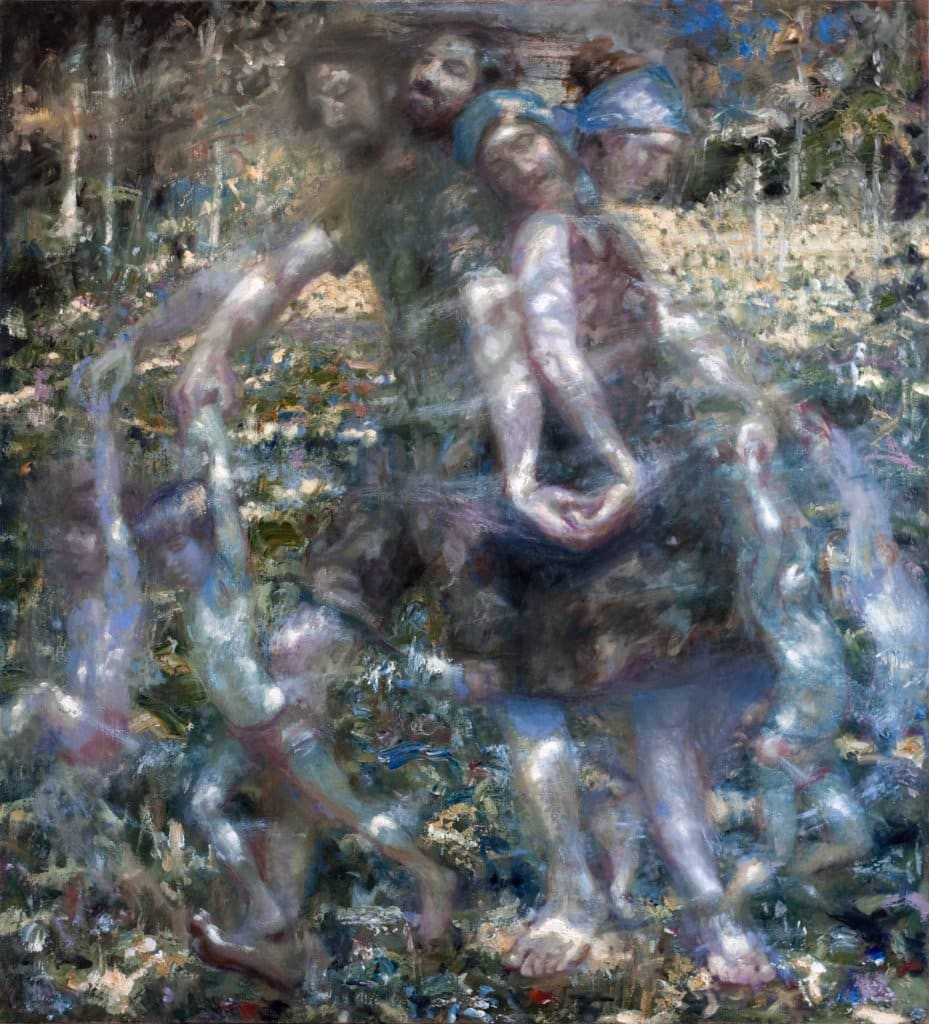
“Zacheriah Kramer_Hermits”,Oil on linen, 110 x 100 cm, 2018
My children’s bodies are made from this dirt, transformed to plant, transformed to flesh, and finally made to echo in the forest as laughter.
I wanted to make a painting where a family melts into the background, becoming one with each other and with their surroundings, each maintaining their own direction, but in harmony with the whole, almost swirling around their own axis.
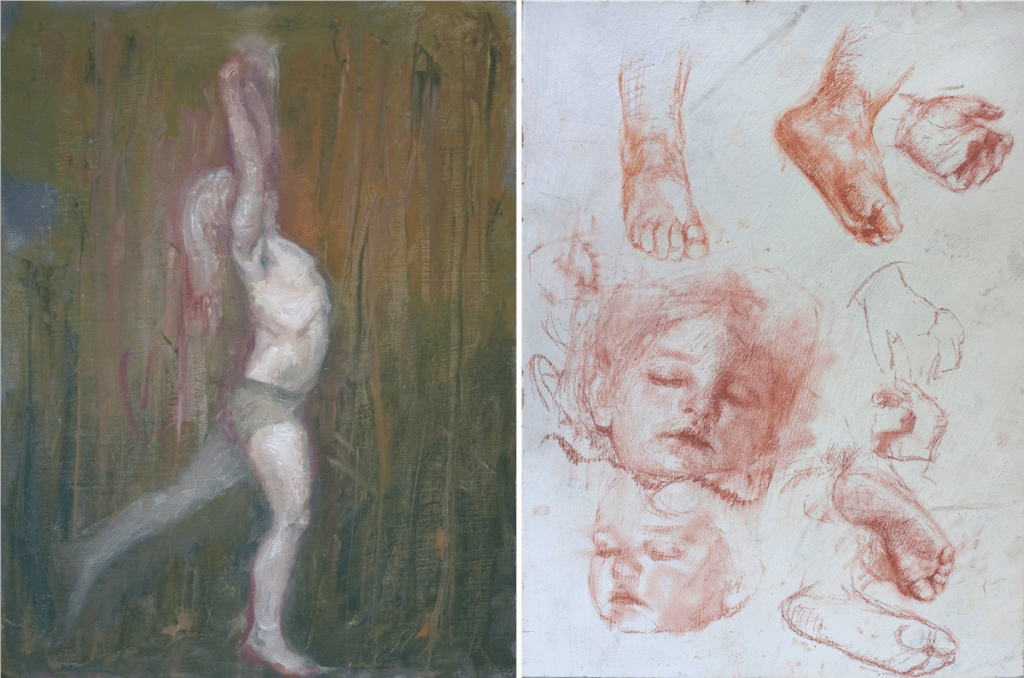
From left to right: Quick gesture study for Hermits and Children studies
Spontaneous studies from life are the backbone of my work, which I make to engage the world intensely.
I like to put myself in interesting places with paint where I can respond spontaneously to what people, wind, and light do; to be a conscientious witness of the world’s unfolding through time, with all of my senses.
I try to give the world around me the attention I can muster, with my whole body, to more fully sense myself in it, as a part of its complexity and mystery, and in so doing to deepen my own sense of wonder. Brush and pigment in traditional painting powerfully open the mind to the world, always revealing new and fresh aspects.
I find that this process works two ways: while a picture forms on the canvas, my own inner contours are also reworked. The world never fails to crush my expectations. To give what I experience in the world weight on canvas is to give it weight in my soul as well, in some sense giving it permission to change me. The picture is in part the record of this process. I’m concerned with how the act of painting will form me, and though the perceived goal of a well-lived life will surely evolve as I live, my method and approach to picture making must always be subordinated to this goal. I don’t work from photographs because I think to do so over a long period of time would deprive me of so much that is precious about being human.
The painting Hermits is a conceptual, imaginative piece that grew out of many of these spontaneous studies.
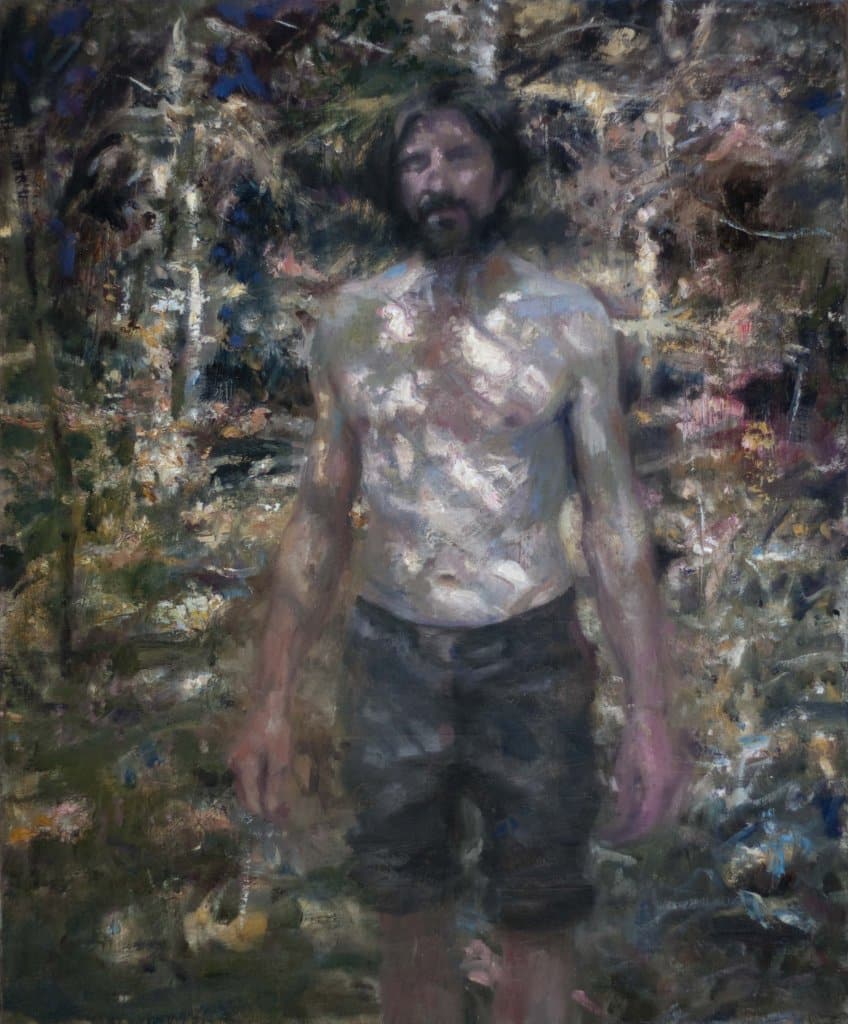
Zacheriah Kramer, “Man in a Forest”, Oil on linen, 50 x 60 cm, 2018
I had been looking at Sargent’s painting of a hermit in a forest, where a lone man is wholly integrated with his environment. I set about trying to study the effect of dappled light on skin.
I hung a mirror on a tree in the forest behind my house and did the self-portrait Man in a Forest. I also looked long at Schiele’s Hermits, where he and Klimt melt together as one rigid form.
I liked the idea that people in community help make each other, and I liked the way that the triangle composition held them together while giving the feet freedom to move.
I did some very quick pencil sketches to place my figures built around the triangle, but I let the softer more fluid circle come into the composition as well.
Then I set to work on the big canvas without a clear idea of how the painting would develop.
The painting was mostly completed outside on the grass with natural ambient light on both canvas and skin. Studies came when I deemed them necessary during the process.
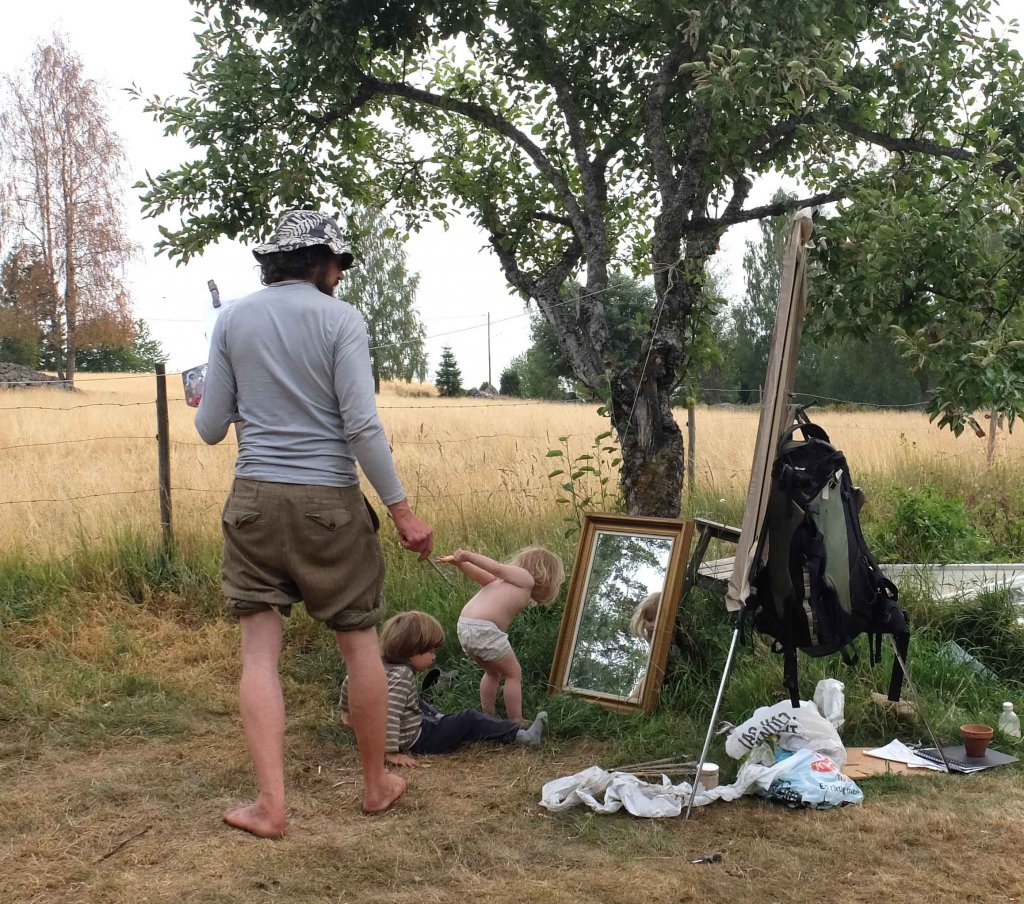
Zacheriah working on Hermits
I used my own family as models, painting them very freely and without much rigid posing. I wanted to give the picture a fluid feeling, where bones and weight exist, but which are seldom static. It was for me a great technical experiment to see if I could paint a largish canvas from life and memory/imagination, with multiple figures in motion under dappled light, and broken up enough to convey the idea of melting into the environment.
With broken form, repeated images, and pronounced paint texture I tried to create a complex visual experience that seeks to underscore the transience and the frailty of these people. Forms are often subordinated to light, giving the light a kind of fluid, but permanent solidity, in contrast to the impermanent form, which in the life-cycle exists for a time, develops, then passes away while identical light shines on that which emerges in its place.
With the thickly painted surface quality of this picture I wanted to underscore that human bodies, along with all organic life, spring from the mud (which pigment mixed with oil more or less is). The surface also distinguishes this picture as a hand-made object in contrast to the smooth digital prints or the intangible backlit images on screens that are ubiquitous in our age. I am interested in how patches of earth stuck to cloth have the potential to reach beyond the horizon of speech, and break and heal human hearts.
This work is not perfect by any means, but it is special to me in part because the challenge helped me find solutions to technical difficulties that I had not had the opportunity to work with earlier. Some of the visual fenomena resulting from paint application I learned while working on this picture I have begun to use in my plein-air landscape work. It also gave me the opportunity to meditate for several months on the ideas that lie behind it, ideas which hopefully help me better to act well in the present.
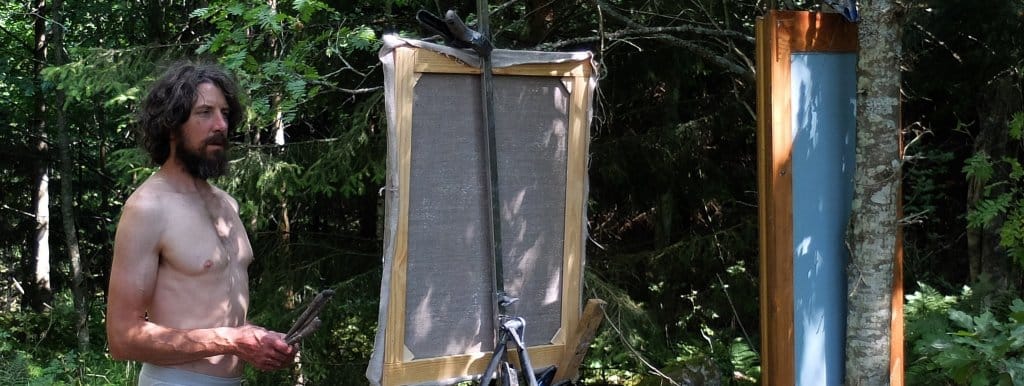
More about Zacheriah:
Zacheriah Kramer was born in 1979 in Colorado. Always drawn to the representational tradition in painting, he trained at The Florence Academy of Art in Gothenburg, Sweden, and Florence, Italy, graduating in 2011.
He was an assistant instructor in drawing at FAA in 2010 while he was still a student, and became a principal instructor after graduation. He received the 20th anniversary 4th year scholarship from The Florence Academy of Art in 2011. Other awards include the best model study, Florence Academy of Art Mölndal 2010; Year’s best portrait, Florence Academy of Art, Mölndal 2010-11; Year’s best painting, Florence Academy of Art (Florence and Mölndal) 2010-11; Alumni Choice best painting, Florence Academy of Art 6th Alumni Exhibition, 2012. He was a guest instructor Alpine Fellowship 2013 och 2014, winner of Ruminate Magazine’s Kalos visual art prize 2015, and received a stipend from Svenska kulturfonden for the project Första person pluralis. He has a broad interest in the arts and humanities, and has formally studied philosophy, theology, and language. He remains an eager student of the ideas that have shaped western culture.
To view more of Zacheriah’s work visit:
Website: www.zacheriahkramer.com
Instagram: @zacheriahkramer
FAA Alumni Gallery: Zacheriah Kramer



